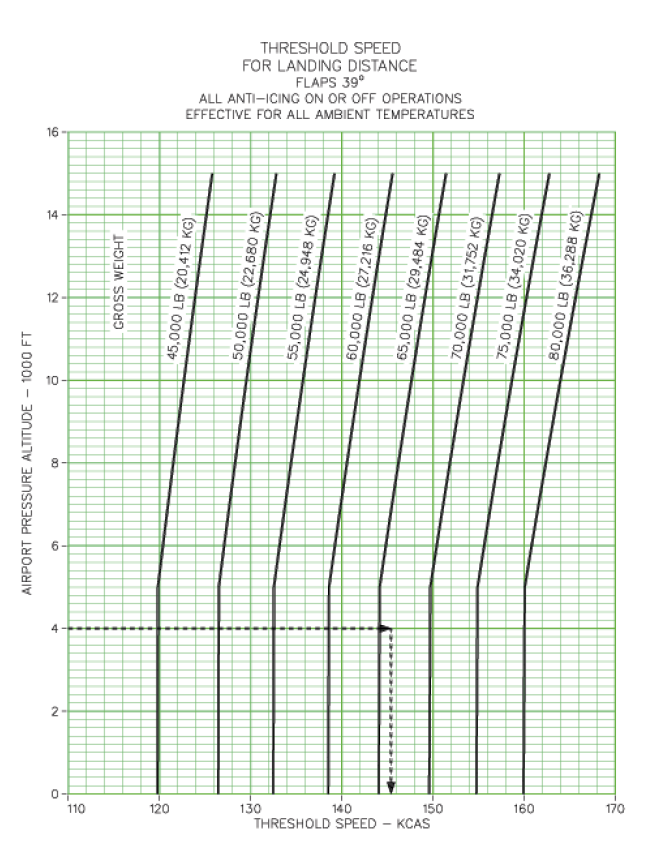VREF is such an important number, Mister Gulfstream put it right in front of you on the display controller for their PlaneView cockpits. Along side with V2, they are the most important airspeeds you will have to take care to observe. Most pilots fly with the display controller blanked out. Not me, I've always got VREF staring me in the face.
— James Albright

Updated:
2013-09-12
The FAA doesn't spend a lot of time telling aircraft manufacturers what VREF is, but they do mandate that it be at least 23 percent higher than VSR0 Reference Stall Speed in the landing configuration..
Oh yes, the display controller. For you G450 pilots, nothing in the book tells you the displayed VREF is accurate at all altitudes. We know it shows VREF for the current weight and the flap setting indicated by the flap handle. I've tested for a range of VREFs from sea level to 15,000' (as high as the VREF charts go) and for 1.3 VSR above that. The display controller produces good numbers.

1
Regulatory
Definition
VREF means reference landing speed.
Source: 14 CFR 1.2
Certification
A stabilized approach, with a calibrated airspeed of not less than VREF, must be maintained down to the 50-foot height.
(
i) In non-icing conditions, VREF may not be less than:
(A) 1.23 VSR0;
(B) VMCL established under § 25.149(f); and
(C) A speed that provides the maneuvering capability specified in § 25.143(h).
(ii) In icing conditions, VREF may not be less than:
(A) The speed determined in paragraph (b)(2)(i) of this section;
(B) 1.23 VSR0 with the landing ice accretion defined in appendix C if that speed exceeds VREF for non-icing conditions by more than 5 knots CAS; and
(C) A speed that provides the maneuvering capability specified in § 25.143(h) with the landing ice accretion defined in appendix C.
(3) Changes in configuration, power or thrust, and speed, must be made in accordance with the established procedures for service operation.
(4) The landing must be made without excessive vertical acceleration, tendency to bounce, nose over, ground loop, porpoise, or water loop.
(5) The landings may not require exceptional piloting skill or alertness.
Source: 14 CFR 25.125 (b)(2)
The maneuvering capabilities in a constant speed coordinated turn at forward center of gravity, as specified in the following table, must be free of stall warning or other characteristics that might interfere with normal maneuvering:
| Configuration | Speed | Maneuvering bank angle in a coordinated turn | Thrust/Power setting |
|---|---|---|---|
| Takeoff | V2 | 30° | Asymmetric WAT-Limited.1 |
| Takeoff | 2V2 + XX | 40° | All-engines-operating-climb.3 |
| En route | VFTO | 40° | Asymmetric WAT-Limited.1 |
| Landing | VREF | 40° | Symmetric for -3° flight path angle. |
1 A combination of weight, altitude, and temperature (WAT) such that the thrust or power setting produces the minimum climb gradient specified in § 25.121 for the flight condition.
2 Airspeed approved for all-engines-operating initial climb.
3 That thrust or power setting which, in the event of failure of the critical engine and without any crew action to adjust the thrust or power of the remaining engines, would result in the thrust or power specified for the takeoff condition at V2, or any lesser thrust or power setting that is used for all-engines-operating initial climb procedures.
Source: 14 CFR 25.143(h)
2
What it really means
VREF is a speed:
- That gives you at least a 23 percent margin over VSR0, reference stall speed in the landing configuration.
- That is at least as high a VMCL, minimum maneuver speed in the landing configuration.
- That allows you to maneuver up to 40° of bank while in a coordinated turn, both engines, on a 3° glide path.
As is true with V2 during takeoff, VREF during all other phases of flight will keep you above the other minimums.
3
Gulfstream example

Threshold Speed for Landing Distance, from G450 AFM pg. 5.11-2
VREF, LANDING REFERENCE SPEED - the landing threshold speed for the selected landing configuration and atmospheric conditions.
Source: G450 AFM pg. 5.1-3
The display controller gives you numbers straight out of the AFM. While the manual doesn't say the Gulfstream VREF = 1.3 VSR, comparing the stall pages versus the VREF pages bears this out.

G450 Landing Speed Schedule, from G450 Performance Handbook pg. PC-2.
The performance handbook and pilot's checklist gives the same data in tabular form with the added bonus of flap adjustments.
References
(Source material)
14 CFR 1, Title 14: Aeronautics and Space, Definitions and Abbreviations, Federal Aviation Administration, Department of Transportation
14 CFR 25, Title 14: Aeronautics and Space, Airworthiness Standards: Transport Category Airplanes, Federal Aviation Administration, Department of Transportation
Gulfstream G450 Airplane Flight Manual, Revision 35, April 18, 2013
Gulfstream G450 Performance Handbook, GAC-AC-G450-OPS-0003, Revision 20, November 30, 2011
Please note: Gulfstream Aerospace Corporation has no affiliation or connection whatsoever with this website, and Gulfstream does not review, endorse, or approve any of the content included on the site. As a result, Gulfstream is not responsible or liable for your use of any materials or information obtained from this site.
